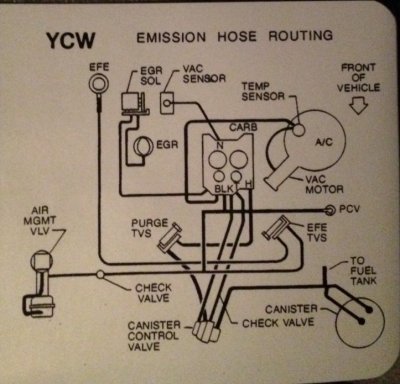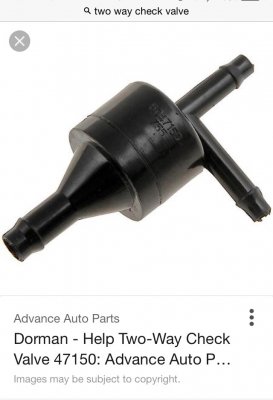1987 GMC Jimmy
Automobile Hoarder
- Joined
- Jan 23, 2016
- Posts
- 5,848
- Reaction score
- 2,387
- Location
- Mississippi
- First Name
- Jesse
- Truck Year
- 1987
- Truck Model
- V1500 Jimmy
- Engine Size
- 350
Stall/Miss When Cold - 3000-3500 RPM Idle When Hot
Sorry to keep asking follow up after follow up on these same issues, but I can't seem to iron them out. It's an E4ME Quadrajet. When it hasn't ran for a while, it does pretty decent and can sit there and run fine all day. I drove it to town and I got almost there and noticed it'd stay the same driving speed when I let go of the gas pedal. I stopped it as soon as I could much to the lament of my brakes, and it almost sounded like a run away diesel. It was really high. About 3000 RPM sitting in park maybe more. No binding in the throttle linkage, dashpot pintle was retracted, and the butterfly plate was all the way open. The carb looked good, but I turned it off and it dieseled for almost a minute. The exhaust smelled suuuper lean also. After that little voyage, it struggles to stay running when it's cold: rough running, missing, rich smelling. Exact same problem I've been having with it. It only runs decent when I've let it sit. Otherwise, it'll do all kinds of weird stuff. I'm guessing it's an air problem, but I'd be open to a fuel problem. I'm gonna do my best to check for an intake leak, but that's all it could be vacuum wise, and I was wondering if there were any suggestions out there. My AFR is basically all over the place also courtesy of my SES light.
Sorry to keep asking follow up after follow up on these same issues, but I can't seem to iron them out. It's an E4ME Quadrajet. When it hasn't ran for a while, it does pretty decent and can sit there and run fine all day. I drove it to town and I got almost there and noticed it'd stay the same driving speed when I let go of the gas pedal. I stopped it as soon as I could much to the lament of my brakes, and it almost sounded like a run away diesel. It was really high. About 3000 RPM sitting in park maybe more. No binding in the throttle linkage, dashpot pintle was retracted, and the butterfly plate was all the way open. The carb looked good, but I turned it off and it dieseled for almost a minute. The exhaust smelled suuuper lean also. After that little voyage, it struggles to stay running when it's cold: rough running, missing, rich smelling. Exact same problem I've been having with it. It only runs decent when I've let it sit. Otherwise, it'll do all kinds of weird stuff. I'm guessing it's an air problem, but I'd be open to a fuel problem. I'm gonna do my best to check for an intake leak, but that's all it could be vacuum wise, and I was wondering if there were any suggestions out there. My AFR is basically all over the place also courtesy of my SES light.
Last edited:



